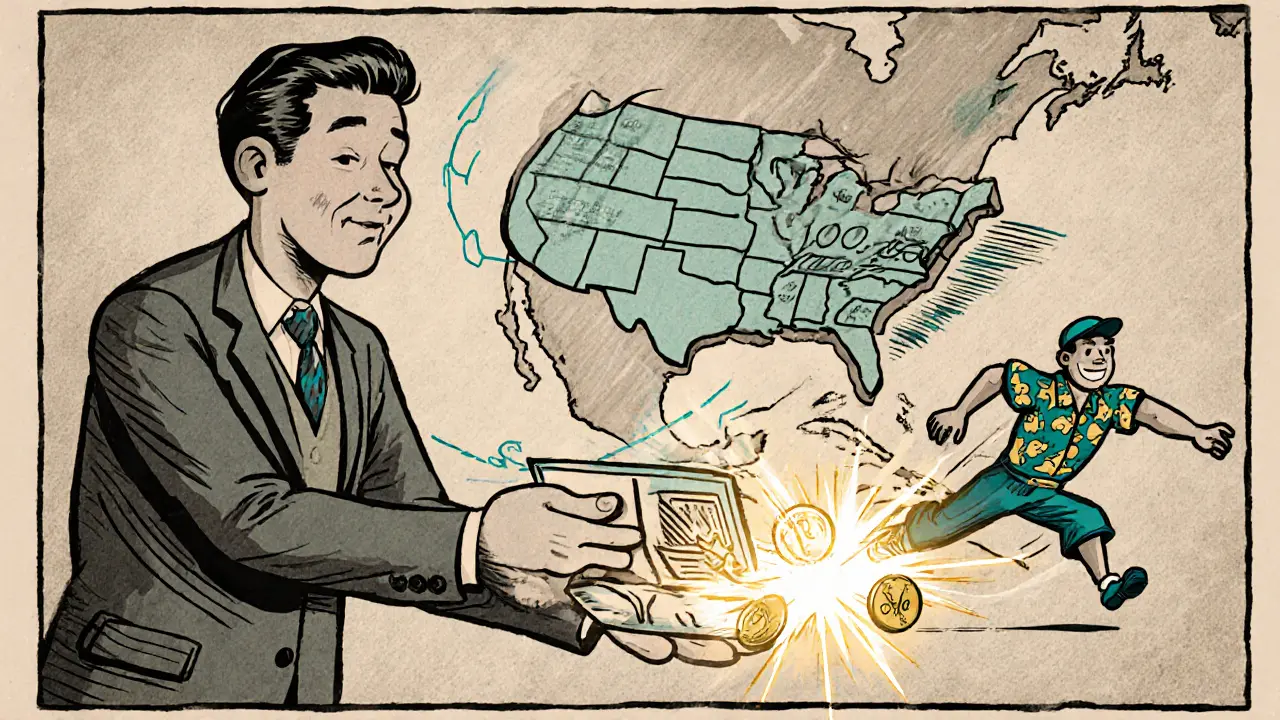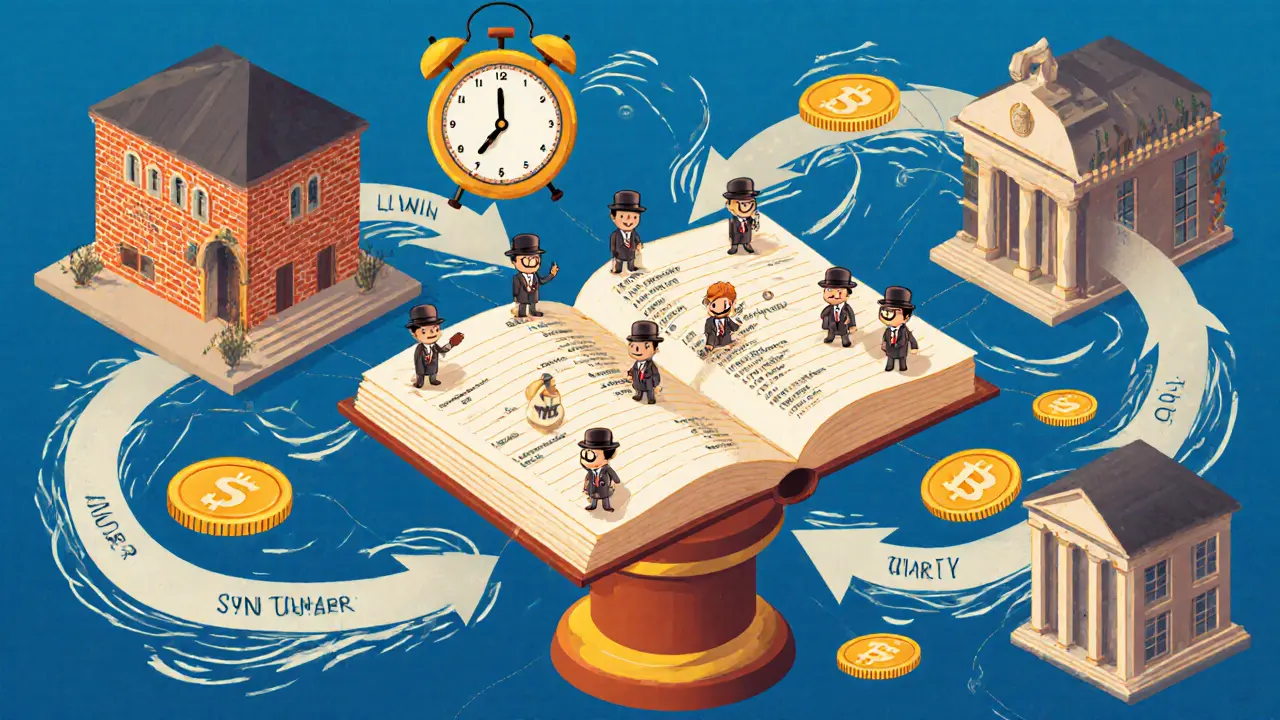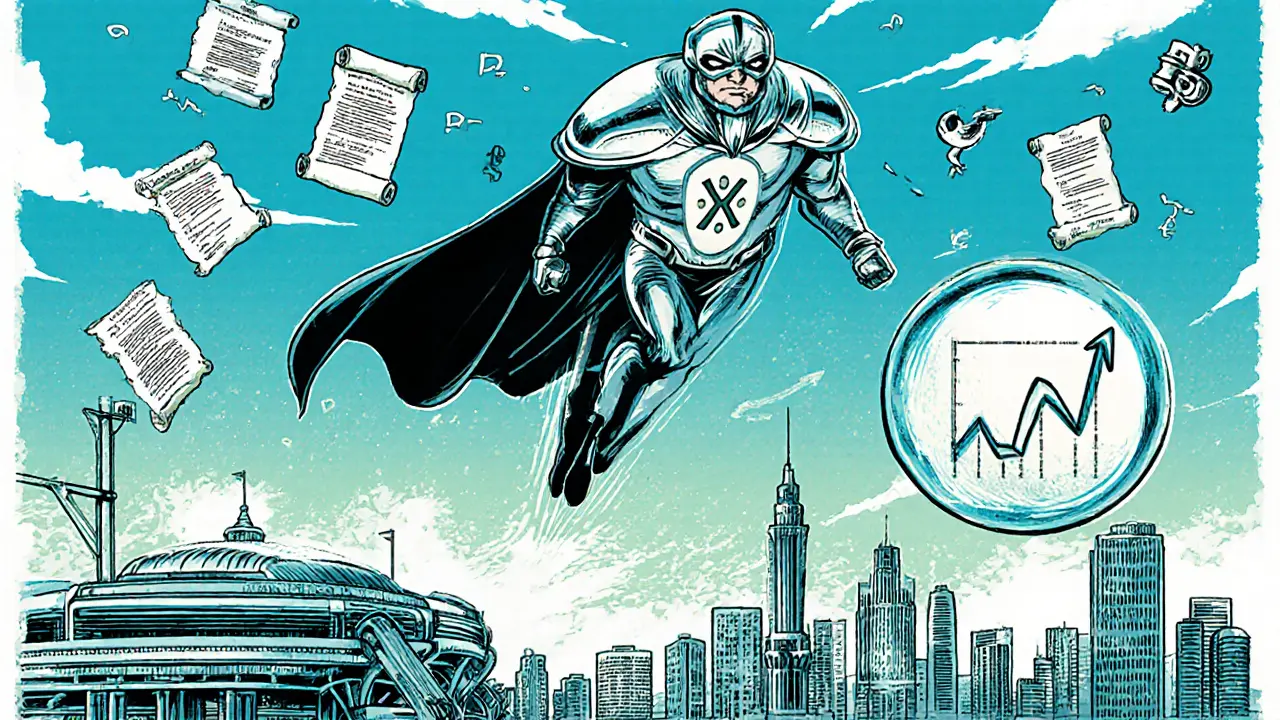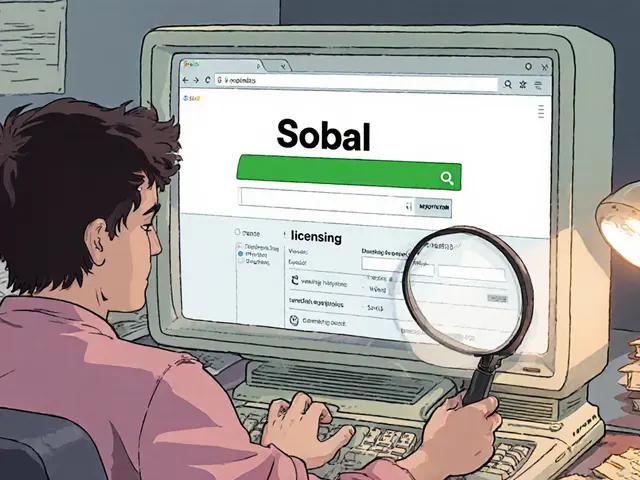
XRP Transaction Cost Estimator
Estimate Your XRP Transaction Costs
Enter details below to calculate the approximate cost of sending XRP transactions.
Estimated Transaction Cost
Your transaction will cost approximately $0.0002.
This estimate is based on current network conditions and standard transaction fees.
Imagine sending $5,000 to the Philippines and watching it appear in the recipient’s wallet in four seconds for a fraction of a cent. That speed and cheapness are what the XRP cryptocurrency promises, and it’s why the coin keeps popping up in headlines about cross‑border finance.
Quick Takeaways
- XRP is a digital asset built for fast, low‑cost international payments.
- Created by Ripple Labs in 2012, it runs on the XRP Ledger, a consensus‑based network that finalizes transactions in 3‑5 seconds.
- As of October2025, about 57.1billion XRP are circulating, giving the token a market cap near $178billion.
- Key use case: Ripple’s On‑Demand Liquidity (ODL) service which lets banks settle across borders without pre‑funding accounts.
- Regulatory outlook remains mixed - the U.S. SEC no longer classifies XRP as a security, but other jurisdictions still impose restrictions.
What Is XRP?
At its core, XRP is a digital token that lives on the XRP Ledger, a public ledger designed for speedy value transfer. Unlike Bitcoin or Ethereum, which rely on mining, all 100billion XRP were pre‑minted when the network launched in August2012. Roughly 57.1billion remain in circulation today, while the rest are held in escrow by Ripple to manage supply.
History and Creation
The story starts with OpenCoin, a startup founded by ChrisLarsen and JedMcCaleb in 2011. OpenCoin rebranded to Ripple Labs later that year and released the XRP Ledger in 2012. The goal? To give banks a tool that could replace the slow, expensive SWIFT system with a near‑instant alternative. By 2025 the ledger processes about 2.8million transactions each day, handling roughly $400billion of cross‑border flow annually.
How the XRP Ledger Works
The ledger uses the Ripple Protocol Consensus Algorithm (RPCA), a consensus model where trusted validators agree on the order of transactions every 3‑5 seconds. Thirty‑five unique validator nodes across 15 countries participate, and Ripple itself runs six of those nodes (about 17% of the total). Because there’s no proof‑of‑work, energy consumption is a fraction of Bitcoin’s, and transaction fees average just $0.0002.
In June2024 the network underwent the “Hooks Amendment,” adding smart‑contract‑like capabilities while preserving its core payment focus. This makes the ledger capable of conditional payments, escrow, and atomic swaps without sacrificing speed.

Key Features Compared to Other Coins
| Feature | XRP | Bitcoin | Ethereum | Stellar (XLM) |
|---|---|---|---|---|
| Consensus | RPCA (validator‑based) | Proof‑of‑Work | Proof‑of‑Stake (post‑Merge) | Stellar Consensus Protocol |
| Finality time | 3‑5seconds | ≈10minutes | ≈12‑15seconds | 3‑5seconds |
| Transaction fee (average) | $0.0002 | $1.85 | $1.20 | $0.00001 |
| Throughput (TPS) | 1,500 | 7 | 30 | 1,000 |
| Primary use case | Cross‑border payments | Store of value | Smart contracts & DApps | Low‑cost payments |
These numbers show why XRP is often called the “payment rail” of the crypto world. It’s not trying to be digital gold; it’s built to move money quickly and cheaply.
Real‑World Use Cases
Ripple’s On‑Demand Liquidity (ODL) service lets banks convert fiat to XRP, send it across borders, then convert it back to the destination fiat. Since launch, ODL has processed over $15billion in total volume. Major banks such as Santander and Bank of America use the system to settle billions of dollars annually, cutting settlement time from days to seconds.
Beyond banks, remittance startups, e‑commerce platforms, and even gaming companies are experimenting with XRP to lower fees. A small‑scale case study from October2025 reported a Philippines‑based money‑transfer business slashing operational costs by 63% after switching to XRP‑based settlements.
Market Snapshot (October2025)
- Circulating supply: 57.1billion XRP
- Market cap: ~ $178billion (≈2.8% of the total crypto market)
- Current price range: $3.10‑$3.45 per XRP
- Daily transaction volume: ~2.8million transfers
- Top holders: Ripple (~44.5billion), institutional investors, retail wallets
Despite being the 6th largest crypto by market cap, XRP’s share of the cross‑border payment segment sits at 12.3% - ahead of most non‑stablecoin alternatives but behind stablecoins which dominate the space.
Pros and Cons
Pros
- Lightning‑fast settlement (3‑5seconds)
- Very low fees - ideal for micro‑transactions
- Strong enterprise partnerships give real‑world liquidity
- High throughput (1,500 TPS) supports large payment volumes
Cons
- Centralization concerns - Ripple runs a noticeable share of validators and holds a large token chunk
- Regulatory uncertainty in several jurisdictions (e.g., Thailand classifies XRP as a security)
- Limited smart‑contract ecosystem compared to Ethereum
- Retail adoption lagging behind Bitcoin and Ethereum

Regulatory Landscape
The U.S. SEC’s 2023 settlement concluded that XRP is not a security when sold programmatically, but the decision left open questions about institutional sales. Since then, Ripple has faced several regional rulings: Thailand treats XRP as a security, while the EU’s MiCA framework currently lists it under “crypto‑assets” without a security label. Ongoing ETF applications in the U.S. (six decisions slated for October2025) could dramatically affect market sentiment - analysts predict a potential 40% rally if most are approved.
How to Buy and Store XRP
Buying XRP is straightforward on major exchanges like Coinbase, Binance, and Kraken. After creating an account, verify identity, deposit fiat or another crypto, and place a market or limit order for XRP. For storage, two main options exist:
- Custodial wallets - the exchange holds the private keys. Easy for beginners, but you trust the platform.
- Non‑custodial wallets - hardware devices (Ledger, Trezor) or software wallets (Xumm, Trust Wallet) let you control the keys. Recommended for anyone holding more than a few hundred dollars worth of XRP.
Setting up a non‑custodial wallet typically takes 10‑15minutes: download the app, write down the recovery phrase, and add your XRP address.
Future Outlook
Several catalysts could shape XRP’s next few years:
- ETF approvals - a positive outcome could pour billions of dollars of institutional capital into XRP.
- XLS‑30d amendment (Q12026) - adds privacy features while staying compliant, potentially attracting privacy‑focused users.
- Partnerships in emerging markets - Ripple’s deal with India’s NPCI aims to move $50billion annually, which would boost daily transaction volume dramatically.
Analysts remain divided. Some see 5‑7% annual growth if regulation clarifies, while others warn that Ripple’s token‑holding strategy could cause price volatility whenever large tranches are released. The consensus is that XRP will stay a niche but vital piece of the global payments puzzle rather than becoming a mainstream store of value.
Quick Checklist for New XRP Users
- Research exchange fees - they vary widely.
- Use a reputable non‑custodial wallet for long‑term holding.
- Stay updated on regulatory news, especially U.S. ETF rulings.
- Consider dollar‑cost averaging to mitigate price swings.
- Only allocate money you can afford to lose - crypto remains high‑risk.
Frequently Asked Questions
What makes XRP faster than Bitcoin?
XRP uses the Ripple Protocol Consensus Algorithm, which reaches agreement among trusted validators every 3‑5 seconds. Bitcoin relies on proof‑of‑work mining, which takes about 10 minutes per block.
Is XRP a security?
In the United States, the SEC’s 2023 settlement concluded that XRP is not a security for programmatic sales, but the classification can differ elsewhere (e.g., Thailand treats it as a security).
How can I store XRP safely?
For long‑term storage, use a non‑custodial wallet such as Ledger or the Xumm app, where you control the private keys. Custodial wallets on exchanges are fine for short‑term trading but rely on third‑party security.
What is Ripple’s On‑Demand Liquidity?
ODL lets banks convert fiat to XRP, send it across borders, then convert it back to the destination fiat instantly, eliminating the need for pre‑funded correspondent accounts and reducing costs dramatically.
Where can I buy XRP?
Major exchanges such as Coinbase, Binance, Kraken, and Bitstamp list XRP. Sign up, verify your identity, fund your account, and place an order for XRP.





Comments (17)
Ali Korkor
XRP is actually doing something useful unlike a lot of these other coins that just sit there looking pretty. I’ve seen banks use it and it’s crazy how fast it moves money. No more waiting 3 days for a wire.
James Young
Don’t get fooled by the hype. Ripple controls half the supply and runs 17% of the validators. This isn’t decentralization it’s a corporate ponzi with a fancy ledger. You think this is innovation? It’s just Wall Street trying to rebrand SWIFT.
Serena Dean
For anyone new to XRP: if you’re holding it long term get it off the exchange. Use Xumm or Ledger. Seriously. I’ve seen too many people lose everything because they trusted a platform to hold their keys. It’s not hard, takes 15 minutes.
Ayanda Ndoni
Why even care? The whole thing feels like a corporate PR stunt. Banks use it? Cool. But I’m still waiting for one person I know to actually use XRP to send money to their family abroad.
Akinyemi Akindele Winner
Oh wow so XRP is the future now? Next you’ll tell me the moon is made of crypto and Elon’s dog is the new Fed chair. This isn’t money it’s a spreadsheet with a vibe. And don’t even get me started on the escrow nonsense.
Andrew Morgan
I used to think crypto was all about freedom until I saw how much control Ripple has over XRP. It’s like having a Tesla that only works if Musk says so. Feels less like tech and more like a gated community for finance.
Still… the speed is insane. My cousin in Nigeria got cash in 4 seconds from his sister in Texas. No bank involved. That’s magic right there.
Chloe Jobson
ODL is the real MVP here. The fact that banks can settle cross-border payments without pre-funded accounts is revolutionary. The liquidity efficiency alone could save the global financial system billions annually.
Norman Woo
Did you know the XRP Ledger is secretly controlled by the same people behind the Federal Reserve? The ‘validators’? They’re all connected. And that escrow? It’s a trap. When they dump 44 billion XRP… boom. Market crashes. They’ve been waiting for the perfect moment.
They’re using this to push CBDCs. You think this is about payments? Nah. It’s about control. The blockchain is a lie. It’s all centralized. They just made it look decentralized.
Sean Huang
They say XRP isn't a security... but then why does the SEC still have a pending case against Ripple? Why do 12 other countries classify it as one? The U.S. decision was a loophole. A technicality. The truth? It’s a security. Always was. They just rebranded it with fancy code.
And don’t forget: Ripple holds 44.5B XRP. That’s 78% of the circulating supply. That’s not a currency. That’s a hedge fund with a ledger.
When the ETF gets approved… it’s not a rally. It’s a pump. And you’re the sucker holding the bag when they exit.
MANGESH NEEL
Let’s be real - this whole thing is a circus. XRP is a glorified IOU wrapped in blockchain jargon. The ‘consensus algorithm’? It’s just a voting system where Ripple picks the voters. And you call that decentralized? Ha! You’re being played. The fees are low because the network’s not under real stress - it’s a controlled demo, not a public utility.
And don’t even get me started on the ‘enterprise adoption’ narrative. Banks use it because they’re forced to by regulators who’ve been cozy with Ripple for years. It’s not innovation - it’s regulatory capture dressed up in white papers.
Meanwhile, real DeFi projects are building open protocols that anyone can fork, audit, and improve. XRP? It’s a corporate product. You buy it, you’re buying into a private club. The only thing faster than its settlement time is how fast it’ll crash when the next regulatory hammer drops.
And yes, I’ve seen the Philippines case study. One startup saved 63%. Cool. But that’s not systemic change. That’s a pilot. A PR stunt. The real test is when a country like Brazil or India tries to go all-in - and then gets slapped with sanctions because the SEC says XRP is a security abroad.
Don’t confuse velocity with value. Speed doesn’t make something sound money. It just makes it convenient for the middlemen who built it.
And you know what? The fact that you’re still defending this after all the lawsuits? That’s the real red flag.
John Murphy
Interesting how the article says XRP is built for payments but doesn’t mention that most users still convert to USD or EUR on the other end. So it’s not really replacing fiat - it’s just a bridge. Kinda like a digital courier. Still useful but not revolutionary
madhu belavadi
Why do people keep acting like this is the future? It’s just another crypto that’s gonna crash when the next bear market hits. I’ve seen this movie before. The hype always dies. The devs always vanish. The wallets get emptied.
Elliott Algarin
It’s funny how we treat money like it’s a tech problem. But money’s not about speed or fees - it’s about trust. And if you need to trust Ripple to hold half the supply and run the validators… then maybe the problem isn’t the system. Maybe it’s us.
Maybe we’re not ready for a currency that needs permission to exist.
Zach Crandall
The regulatory landscape is the elephant in the room. The SEC’s settlement was a tactical win, not a moral victory. The fact that Thailand, Australia, and Brazil still classify XRP as a security suggests this isn’t a global consensus - it’s a legal gray zone with a marketing budget.
And the ETF applications? They’re not about accessibility. They’re about institutional entry. Retail will be the last to benefit - if at all.
Patrick De Leon
Let’s be honest - if this was built by an Irish team it’d be hailed as a miracle of engineering. But because it’s American and backed by Wall Street? Suddenly it’s ‘centralized’ and ‘corporate’. Double standard much?
Dick Lane
I used to hate crypto until I saw my neighbor in Texas send $200 to his mom in Mexico in 3 seconds. No fees. No waiting. No forms. That’s the real win here. Doesn’t matter if Ripple runs some nodes - the tech works. And that’s what matters.
Andrew Morgan
Someone said XRP is just a bridge - and that’s actually the best way to think about it. It’s not trying to be digital gold or a smart contract platform. It’s the internet’s postal service for money. Fast. Cheap. Reliable. And honestly? We need that.